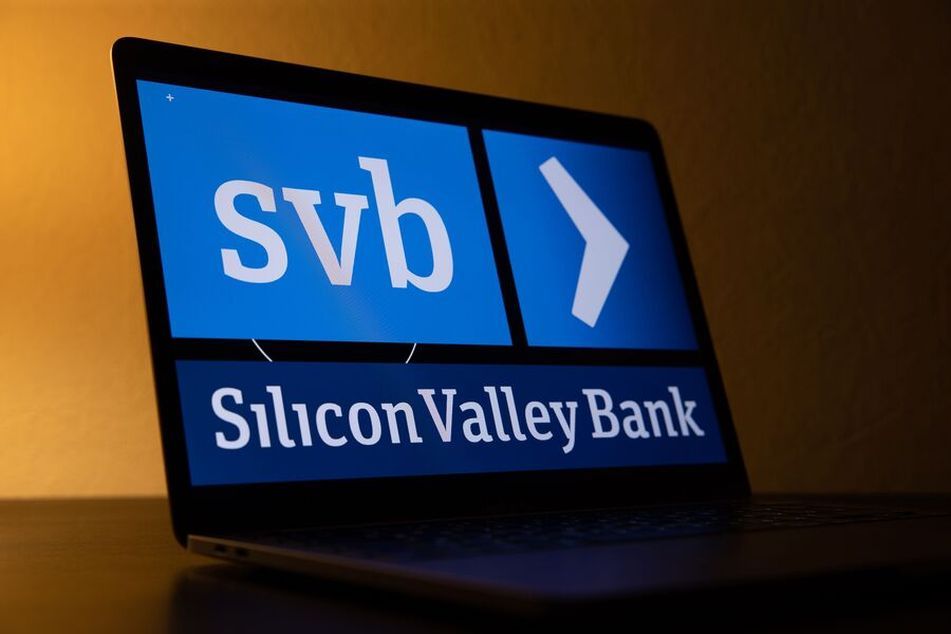SVB failure leaves advisors, analysts questioning deeper risks in US banking system

The California bank's problems show how higher interest rates make it harder to keep deposits on the books.
As the sudden liquidity crisis facing beleaguered SVB Financial Group continues to unravel, financial advisors and analysts are scrambling to put the situation into context without spreading panic.
One thing most market watchers don’t want to say out loud is the phrase “a run on banks,” but such references are already being made by major financial players, including Peter Thiel.
In the latest development in a situation that started unfolding earlier this week when Santa Clara, California Silicon Valley Bank announced a $1.8 billion loss related to asset sales to meet withdrawal requests, trading of the stock was halted Friday morning when premarket selling sent the price down 68%.
By midday Friday, California regulators had shuttered the bank.
“My visceral reaction was to wonder whether or not to pull funds from my internet bank closer to home,” said Dennis Nolte, vice president of Seacoast Investment Services.
“We always talk about keeping some cash at home in case the banks don’t open, and the FDIC coverage should give folks some comfort, although it would take some time for folks to actually access their funds,” he added. “I think the concern is that since we’ve gone through contagion before and the leverage in this cycle was greater than in the Great Financial crisis, that we just don’t know how interconnected all this is.”
Factoring in FDIC insurance for up to $250,000 of deposits and the fact that most large banks are much more diversified than SVB, advisors are generally taking SVB’s challenges in stride. But Brad Lamensdorf, manager of AdvisorShares Ranger Equity Bear ETF (HDGE), said Silicon Valley Bank could represent the tip of an iceberg.
“I think there will be many more of these situations,” he said. “Financials are our highest allocated short areas right now, and I think people are underestimating what a 5% CD rate does as far as holding capital in a bank. Banks are absolutely challenged to get deposits and higher interest rates are crushing them.”
Alexander Yokum, equity research analyst at CFRA, doesn’t completely agree with Lamensdorf’s dark near-term outlook for banks, but he does agree that the troubles at SVB and some other banks are directly linked to the Federal Reserve’s aggressive push to fight inflation with higher interest rates.
“I think the reason this has become such a big deal is this is not the concern investors and analysts were worried about,” Yokum said.
In contrast to the credit crisis of 2008, when banks faced waves of default, their challenge now is fleeing deposits as savers shift to higher-yielding options like CDs and Treasury bonds.
At SVB, a bank popular with venture capital and private equity managers that are withdrawing deposits, the only solution was to sell Treasury bonds at a loss to meet withdrawals.
“Most larger banks are fine because their deposits are more diversified,” Yokum said.
Brian Frank, chief investment officer at Frank Capital Partners, said the unique challenge related to bank deposits has the markets on high alert.
“Everyone on the Street is now looking to see what other banks have large unrealized losses,” Frank said. “I am unsure of just how serious this issue is. The other side of the argument is these banks are holding losses in government bonds. These aren’t subprime mortgages. If the banks could hold to maturity, they will be made 100% whole.”
Paul Schatz, president of Heritage Capital, said he recognizes the “systematic risk in banks,” but believes Silicon Valley Bank is an outlier.
“Roughly one year ago, the banking system was overcapitalized, and what you’re going to see right now is the result of banks and financial institutions doing stupid things on the trading side that will cause them billions of dollars in losses,” he said. “While there may be another outlier or so, I do not have any concerns about the health and safety of the U.S. banking system.”
Kashif Ahmed, president of American Private Wealth, explained that the biggest problem currently facing the banking system might be fear of a bigger problem.
“Folks understandably have PTSD from the 2007-2008 financial crisis, when banks indeed had a meltdown, and caused much of the economic malaise,” Ahmed said. “However, the risks of contagion are minimal because SVB is a niche bank, catering to a specific clientele in one part of the country. A meltdown may be happening at SVB, but it is unlikely to spread.”
Putting the Silicon Valley Bank collapse into perspective
Learn more about reprints and licensing for this article.








